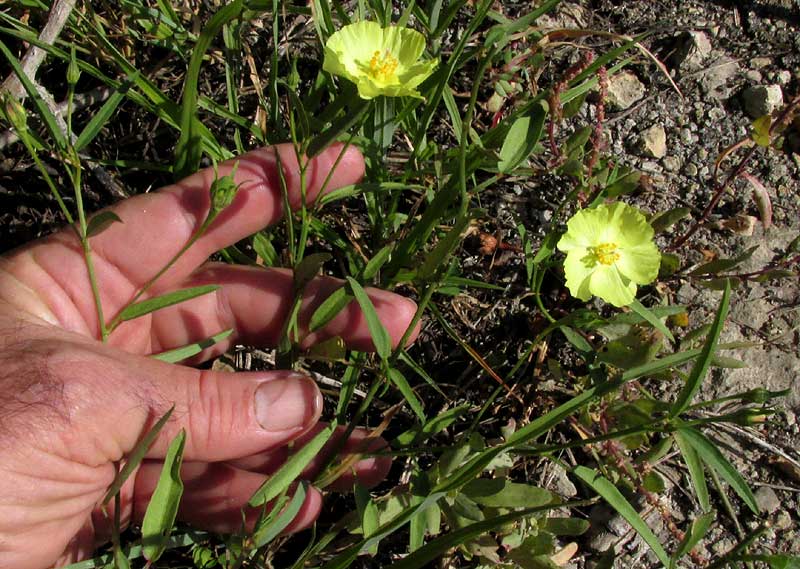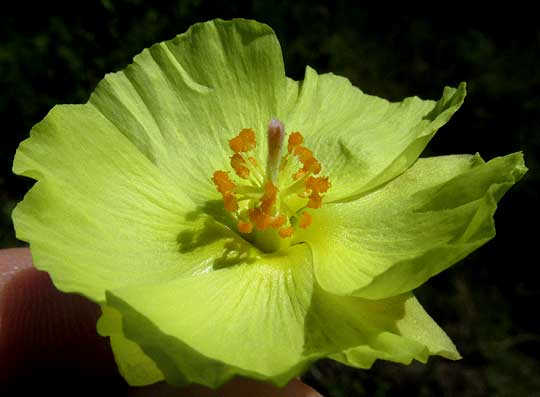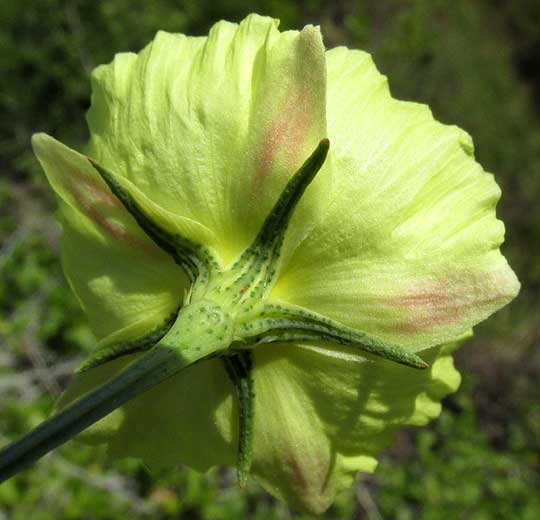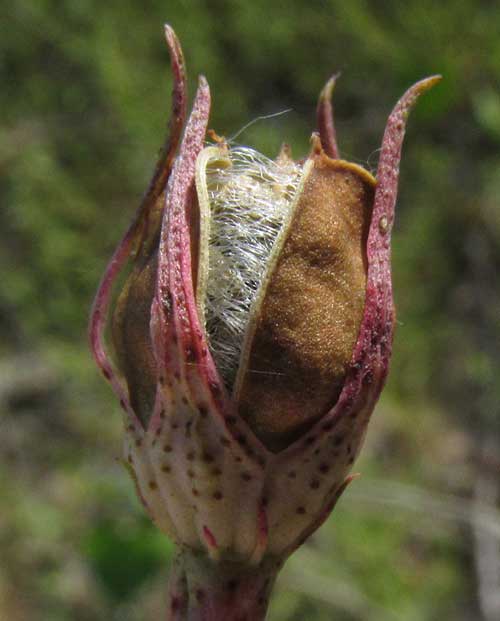Excerpts from Jim Conrad's
Naturalist Newsletter
from the November 16, 2014 Newsletter issued from Río Lagartos, on the Yucatan Peninsula's northern coast (~N21.60°, ~W88.16°), Yucatán state, MÉXICO
YELLOW HIBISCUS

On thin soil atop limestone in low areas occasionally flooded, nowadays you find blooming a little wildflower that at first glance you might assume to be a member of the Evening Primrose Family. It's shown above. However, up closer you see that the stamens are united at their filament bases into a cylinder around the ovary's slender neck, or style, indicating membership in the big Hibiscus or Mallow Family, the Malvaceae, as shown below:

A closer look at the "staminal column" formed by the confluent stamen filaments, with the fuzzy stigma topping the style coming up through the staminal column, is shown below:

If you look at the blossom from below you'll see gland-dotted ribs running the length of the sepals so unlike anything you've ever seen that you suspect you may have something special. A flower's underside is shown below:

A fruiting pod in the process of splitting open is shown below:

This is indeed something special, yet another plant of limited distribution, only occurring coastally in the Yucatán, Cuba, Bahamas and on the Florida Keys, where it's listed as Endangered in Florida. It's CIENFUEGOSIA YUCATANENSIS, usually called Yellow Hibiscus or Yucatan Flymallow. Most literature on the species deals with the small population in the Florida Keys so not much is known about our plants.
An interesting feature of members of the genus Cienfuegosia is that their leaf forms vary drastically. The ones in our picture are slender and simple like willow leaves, but lower down on other plants, I read, they can become trifoliate like a three-toed bird foot, or even be fig-leaf shaped, or broad like sycamore leaves.
Studies on the evolution of the Yellow Hibiscus indicate that it split from a South American member of the genus, Cienfuegosia heterophylla, centered in or near Paraguay. Yellow Hibiscus's pattern of distribution suggests that it arrived from South America into our area via ocean currents.